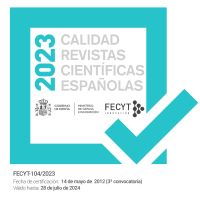Acting of the most capable for the mathematical in the test of yield BECOMA: correlation of the results with the psychometric test BADYG-E3
DOI:
https://doi.org/10.5944/reop.vol.27.num.2.2016.17113Keywords:
battery of evaluation of the mathematical competition (BECOMA), educational diagnosis, yield, high capacity, mathematical competitionAbstract
ABSTRACT
Introduction: The international evaluations of yield constitute a relating one fundamental in the practical contemporary evaluative. Their importance resides in that offer references valuable envelope the yield of the students and the acquisition of competitions. It is sought to make an approach to the prevalence of students located in the superior yield levels in these approach tests, relating the results in one of them with those obtained in a psychometric test. Method: In a first moment it is carried out an approach to the results of the most capable in the Program for International Student Assessment (PISA) for the mathematical competition. Then it is carried out an analysis of the results reached by a sample of students in the Battery of Evaluation of the Mathematical Competition (BECOMA), relating them with those reached in two tests of the Battery of Differential and General Aptitudes (BADyG-E3). Results: Their exhibition is divided in four sections, superior yield in PISA for the mathematical competition, statistical descriptive of the articles that the BECOMA composes, the students' results in the BECOMA in relation to the BADyG-E3 and the most capable students' results for the Mathematics according to the BECOMA. Conclusions: It is observed that the number of students in the higher yield levels of the BECOMA has been bigger to the one reached by our country in PISA and near to the average of the OECD. On the other hand, it is verified that the BECOMA measures that that has been wanted that it measures, mathematical competition, since high correlation indexes appear with the BADyG-E3.
Downloads
Downloads
How to Cite
Issue
Section
License
Las obras que se publican en la revista REOP están sujetas a los siguientes términos:
1. Los autores conservan los derechos patrimoniales (copyright) de las obras publicadas, y garantizan a la revista el derecho de ser la primera publicación del trabajo al igual que permiten la reutilización de las mismas bajo la licencia de uso indicada en el punto 2.
2. Las obras se publican en la edición electrónica de la revista bajo una licencia Creative Commons Reconocimiento-NoComercial 4.0 Internacional . Se pueden copiar, usar, difundir, transmitir y exponer públicamente, siempre que: I) se cite la autoría y la fuente original de su publicación (revista, editorial y URL de la obra); II) no se usen para fines comerciales; III) se mencione la existencia y especificaciones de esta licencia de uso.
3. Condiciones de auto-archivo. Se permite y se anima a los autores a difundir electrónicamente la publicación de sus obras, ya que favorece su circulación y difusión y con ello un posible aumento en su citación y alcance entre la comunidad académica.






